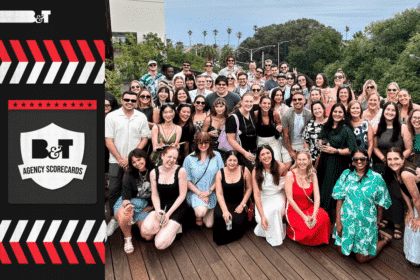Despite some reports suggesting young people have moved away from social media giant Facebook, Steve Lockwood, Facebook Australia’s head of marketing science, has stressed youth are still using the platform.
The claim from Lockwood came from a study for Facebook conducted by research company Nielsen called ‘Aussies on Facebook’, which looked into the behaviour of Aussies on the platform and the different characteristics and demographics.
“For example,” said Lockwood, speaking at the Facebook event unveiling the research yesterday, “you’ve all heard the stories that young people don’t use Facebook anymore.” However the Nielsen data suggests otherwise.
He explained: “The Nielsen research data says 92% of students under 25 are using the platform every single day. And 83% of all 16-24 year olds are on Facebook every day as well.”
“It’s a really broad range of audiences,” he told the audience. “Different ages, different demographics and everyone is using the platform in their own unique way. Everyone has their own personal relationship with Facebook.”
Facebook wanted to really dive into the behaviour of its users, and ended up discovering four main trends.
1. Mobile is the first screen
There’s no denying that the move to mobile has happened. And Facebook has noticed too with users checking the platform for news, updates and sharing things around 14 times a day.
Of the ten million people that use Facebook regularly, nine million of those are doing so on a mobile device.
The Facebook study showed there are more peak hours of mobile usage throughout the day, such as a bump up in the afternoon and later evening. “We do tend to find it gets busier throughout the day,” explained Mia Garlick, head of policy at Facebook. “People get up in the morning, they do want to check news and see what’s happened in the world, then they’re off doing their day, and then towards the end of the day they’re looking for those breaks to see what else is happening.”
2. Video is exploding
People are watching a heap of video now. And Facebook had managed to improve its video offering just before the Ice Bucket Challenge hit, said Garlick. “The two came together to have a massive impact on the platform.”
“Now you might be thinking, the whole idea of the mobile video trend, how is that going to work as people don’t watch video on their phone,” Garlick posed to the audience. “But we’re actually seeing that people are watching a lot of videos on their phone.”
There’s around three billion views of videos on Facebook everyday, according to the research, and 65% of them come from a mobile device.
3. Facebook and TV
“It’s probably no surprise to anyone in the room that the idea of dual-screening has been around for a long time,” said Garlick. And the research by Nielsen found 70% of Facebook users aged 25-44 have a form of dual-screening happening some, most or all of the time.
“It’s the younger demographics again that are doing that the most,” explained Garlick. Mums too are big multitaskers when it comes to using a heap of screens at once, found the research.
4. Personal and Relevant
Your Facebook newsfeed is basically your own personsalised newspaper, said Garlick. The algorithm figures out what you like and click on most to bring content that you will enjoy.
“This was reinforced when The New York Times innovation report was somehow made public, and they found that only one third of their readership was actually coming to the front page to find articles,” she said. “Two-thirds of readers were finding articles by social media, email referral, messenger referral and things like that.”








